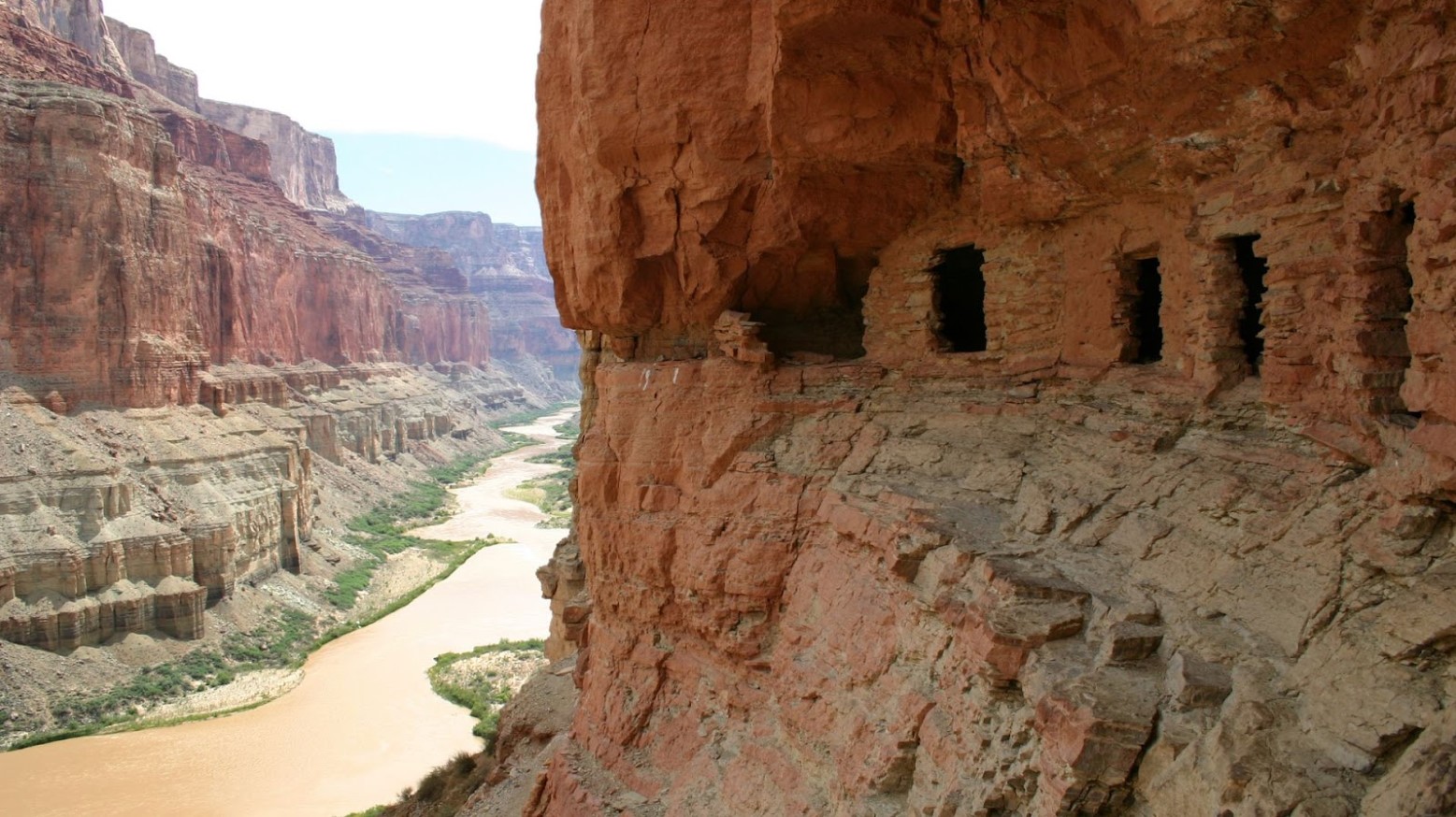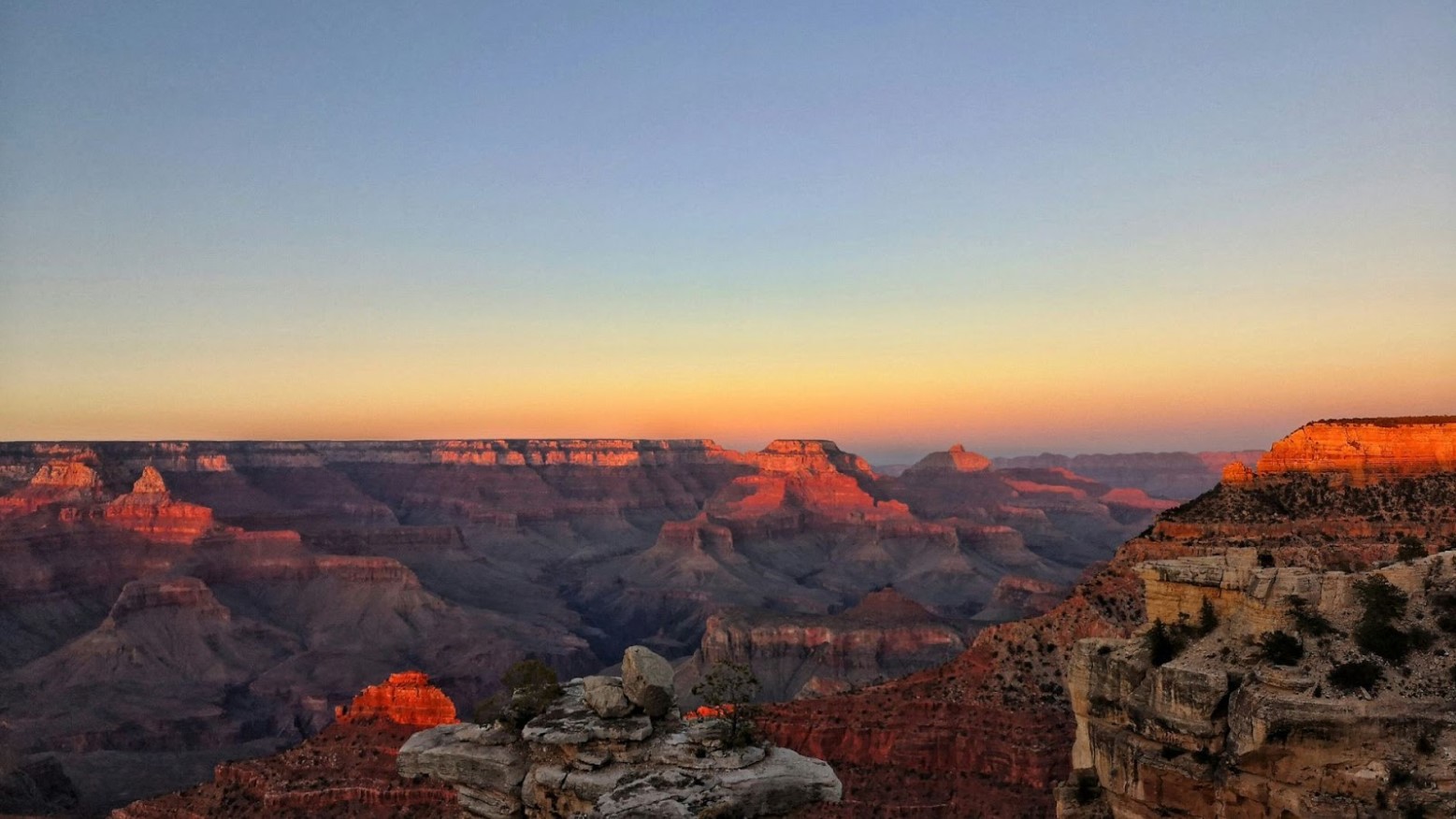Geologist’s Hike Leads to Prehistoric Discovery in the Grand Canyon
A geological find in the Grand Canyon has stunned scientists and history enthusiasts alike.
During a hike on the Bright Angel Trail, geologist Allan Krill discovered fossilized footprints in a boulder that had been exposed by a cliff collapse. This finding has revealed secrets about prehistoric life that predate the dinosaurs.
The Serendipitous Discovery
Allan Krill, a seasoned geologist, was on a vacation hike with students in 2016 when he spotted a peculiar boulder.

Source: Anthony Melone/Unsplash
The rock, dislodged from a cliff face, caught his expert eye with its unusual surface markings. Little did he know, this would lead to an extraordinary paleontological discovery.
The Manakacha Formation's Rich History
The boulder Krill found belonged to the Manakacha Formation, a geological layer known for its rich fossil deposits.

ource: Omer Nezih Gerek/Unsplash
This formation, consisting of mudstone and limestone, dates back millions of years and often reveals well-preserved remnants of ancient life. Krill’s boulder was no exception.
Footprints from the Distant Past
Upon closer inspection, Krill noticed that the boulder’s surface featured a series of fossilized footprints.

Source: Grand Canyon National Park/Wikimedia Commons
He took photographs and sent them to a paleontologist for verification. The confirmation that these prints were indeed ancient and significant set the stage for a deeper investigation.
Dating Back 313 Million Years
The fossilized footprints were estimated to be around 313 million years old. This discovery was remarkable because it predated the dinosaurs, offering a rare glimpse into life on Earth long before these giants roamed.

Source: Tim Hart/Unsplash
The prints belonged to a tetrapod, a four-legged vertebrate that lived in a vastly different environment.
Understanding the Grand Canyon's Formation
The Grand Canyon’s geological story spans over two billion years. The Colorado River has played a crucial role in shaping the canyon, carving through layers of rock and soil.

Source: Living Image
This process has revealed countless geological secrets, including Krill’s incredible find.
The Erosive Power of Water
Water, in the form of rain and ice, has been a relentless force in the Grand Canyon’s formation.

Source: Matt Hardy/Unsplash
Over millennia, the Colorado River’s erosive action has transformed the landscape, creating the vast chasm we see today. This natural process continues to uncover new geological wonders.
The Grand Canyon's Geological Timeline
Geologists believe that the first stage of the Grand Canyon’s formation began about 70 million years ago.

Source: Inspired Imperfection
Tectonic movements uplifted the Colorado Plateau, setting the stage for the river’s erosive work. The timeline, however, was also challenged by a study suggesting a younger age of 5-6 million years.
The Importance of Fieldwork
Krill’s discovery underscores the value of hands-on fieldwork in geology. Despite extensive research and documentation, new findings can still emerge from direct observation and exploration.

This emphasizes the dynamic nature of geological studies and the continuous potential for new discoveries.
An Academic Debate
Krill’s find sparked academic discussions about the age and significance of the fossilized footprints.

Source: AZ Highway
Researchers debated whether the tracks were made by one or two reptiles and what these findings imply about prehistoric life. Such debates highlight the ever-evolving understanding of Earth’s history.
A New Tourist Attraction
Today, the boulder with the fossilized footprints has become a notable tourist attraction. Hikers on the Bright Angel Trail can stop to see this remarkable piece of history.

Source: Gabriel Tovar/Unsplash
This boulder serves as a reminder of the ancient life that once inhabited the region and the ongoing discoveries within the Grand Canyon.
Krill's Legacy in Geology
Allan Krill’s discovery has cemented his name in geological history. His keen observation and dedication to fieldwork led to a find that offers invaluable insights into Earth’s prehistoric life.

Source: Jennifer Rogalla/Unsplash
The discovery is an example of the importance of curiosity and exploration in uncovering the secrets of our planet.
